An archetypal house with a common gabled roof is perhaps one of the most recognizable forms. Attempting to reinvent homes with traditional sloping roofs, architects and designers bring in new unexpected twists. Modernized in form and function, these buildings have distinctive outlines and unconventional floorplans.


Sol House by Alex Nerovnya Architecture
Alex Nerovnya Architecture, Moscow-based team of designers and architects, use simple geometry and a common gable roof in an unusual manner. Their Sol House concept is inspired by the possibility to merge commonplace classic architectural shapes with the wild environment utilizing genuine natural materials and energy efficiency
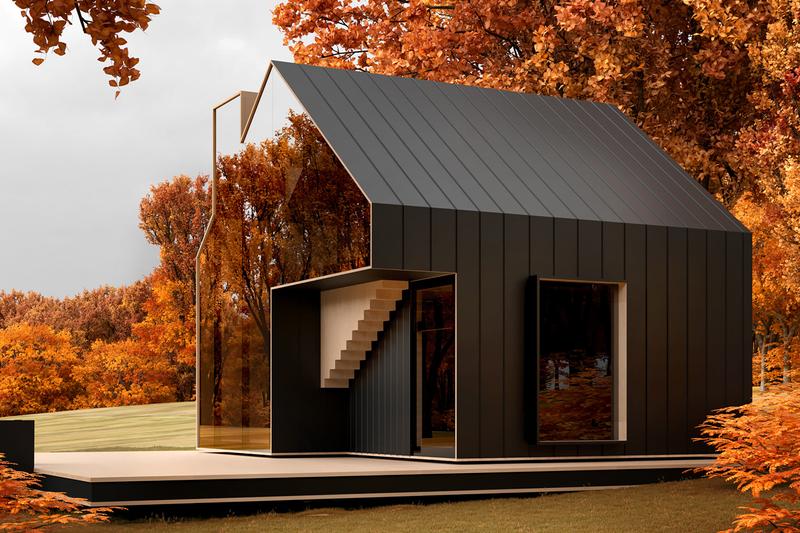
Sol House by Alex Nerovnya Architecture
Signature tempered glass walls serve as mirror-like screens and make the building appear almost invisible when looked at from a certain perspective. The person inside feels permanently immersed into the surrounding scenery, as if one wall of the building were missing. The panoramic glass lets natural light penetrate into the open-plan interior, with only master bedroom and bathroom hidden from the eye, the overall feeling of the house changing drastically depending on the time of the day.

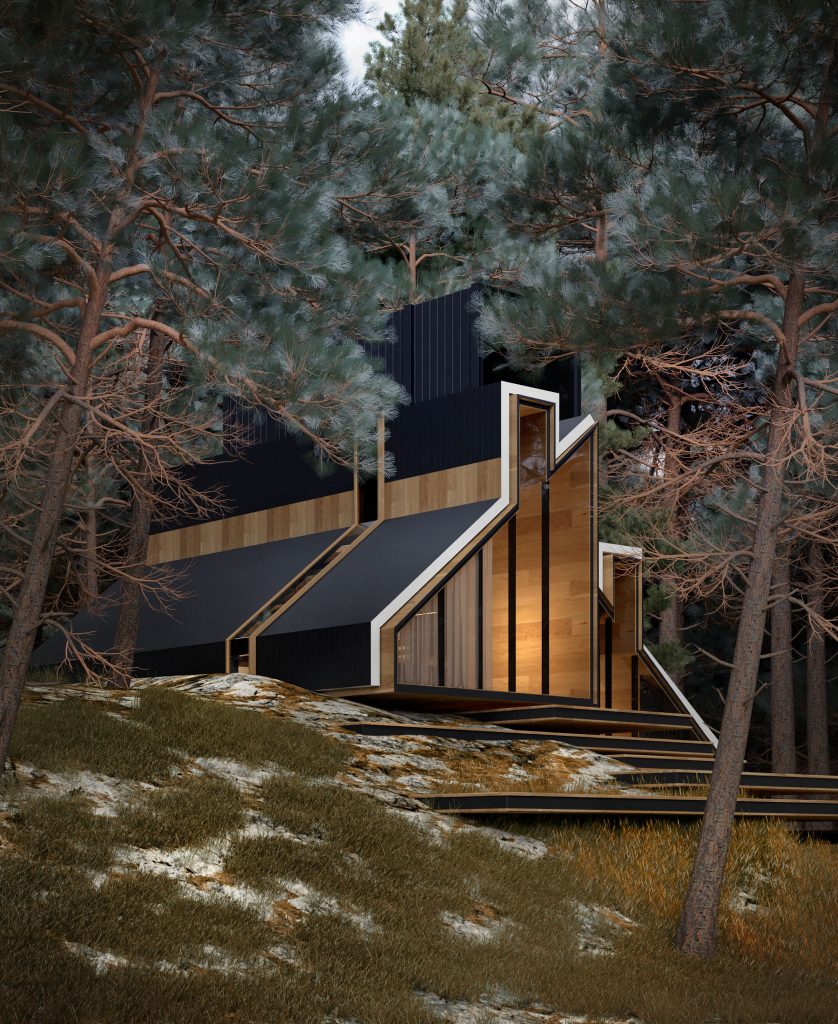
York House by Alex Nerovnya Architecture
The light-filled York House concept utilizes similar design principles and similarly gives the residents a sense of connection with the wild. Designed for a larger company, the house includes four bedrooms within the frame of an angular cabin from steel and timber featuring a grand glass façade visually split in two, which makes a common gable roof solution look fresh and different. Multi-leveled terraces are designed for spending time outdoors, while massive sliding glass doors blend the interior with the exterior.
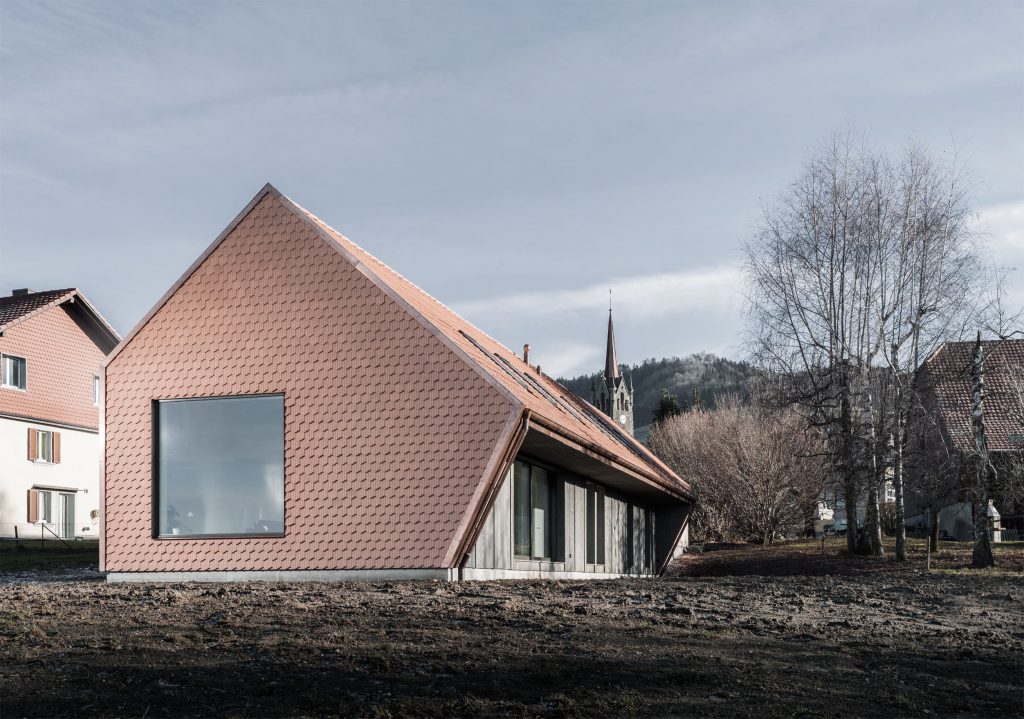
Village House by Index Architectes; ph: Philippe Joner / Blacksquare
Swiss studio Index Architectes founded by Alexandre Noël and Wynd van der Woude has designed a house in Villarlod that looks like a modern version of the gabled form of the farmhouses typical for this region of Switzerland. The building has got its modern twist thanks to the asymmetric gables formed by extending eaves on the southwest facade, exaggerating the building’s shape and giving it more space inside.
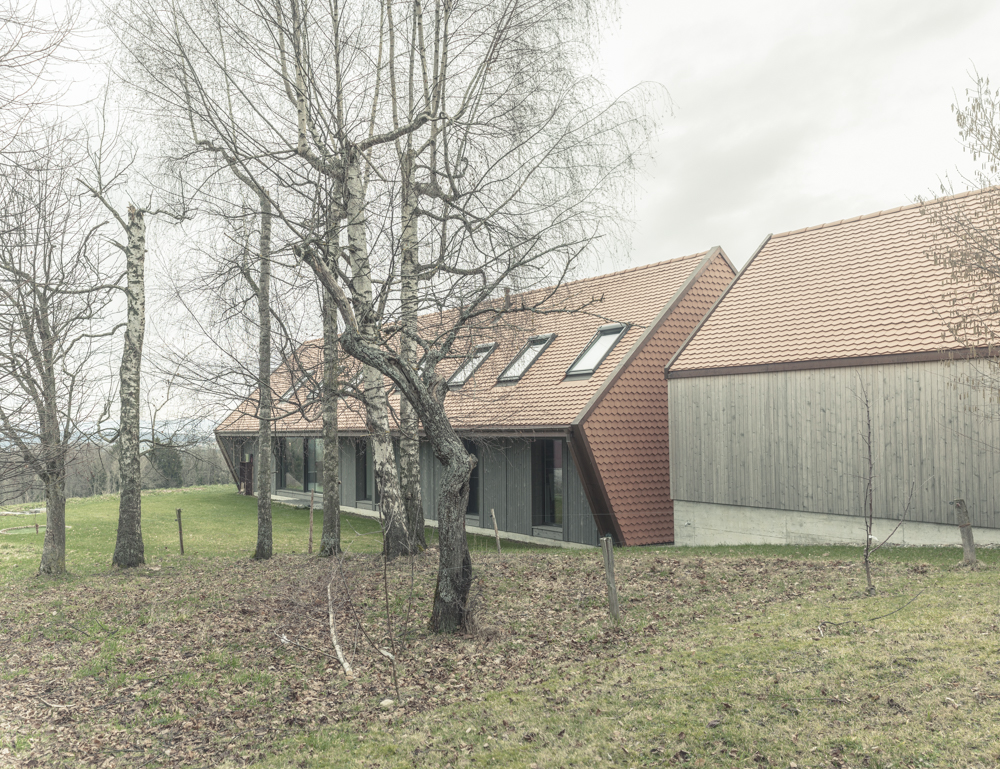
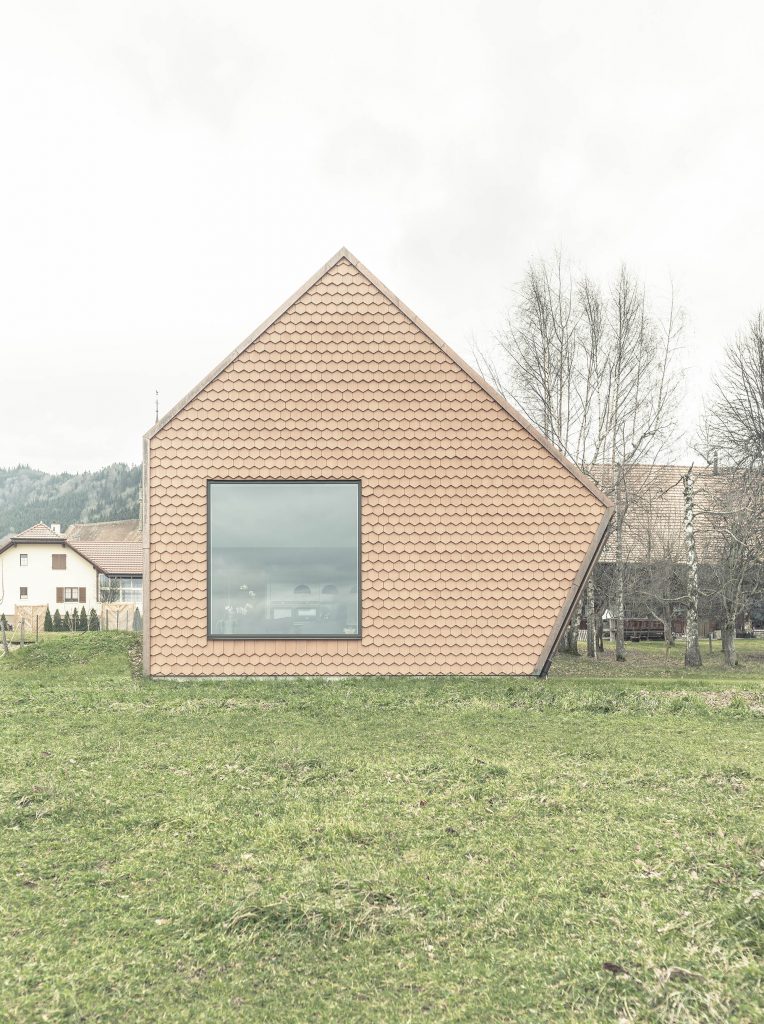
Village House by Index Architectes; ph: Philippe Joner / Blacksquare
Traditional building methods and materials were employed throughout the project to reinforce its connection with the local architecture. The roof and all exposed facades of the building are covered with angular clay tiles, durable and economical material traditionally used to protect barns and farmhouses against the elements. Echoing typical farm configurations, the south-west façade is the only one clad with wood, as protected by an eave and exposed to more sunshine, is is less subject to wind and rain.
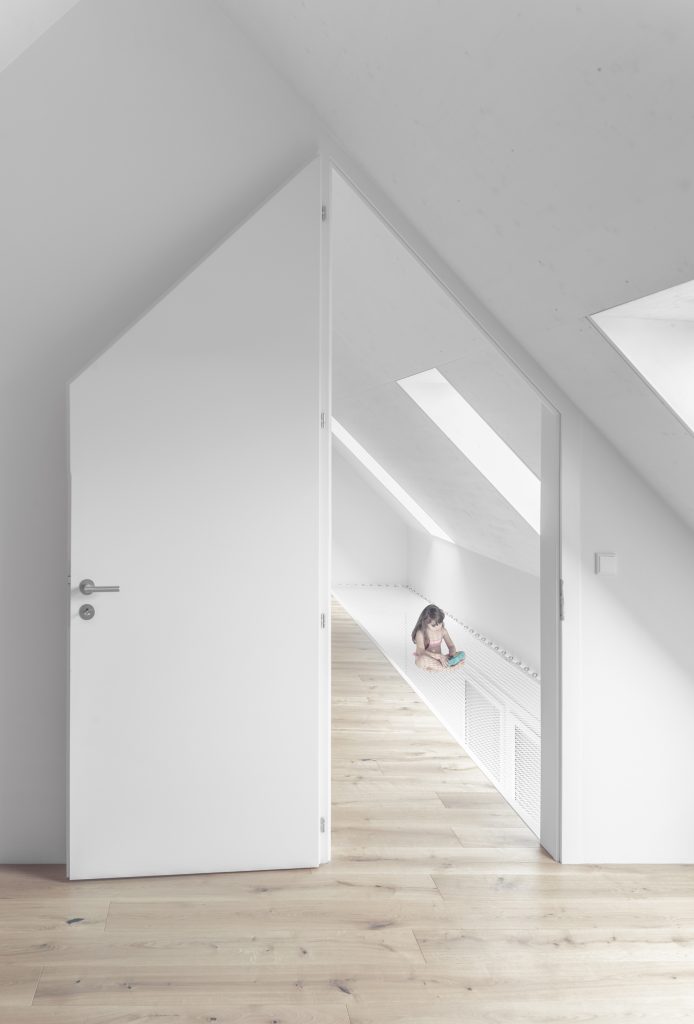
Village House by Index Architectes; ph: Philippe Joner / Blacksquare
Internally, rooms are organized around a large open and continuous space, containing a toilet and utility spaces, as well as a staircase. The natural light penetrates into the bedrooms through a series of skylights set in the gabled roof.
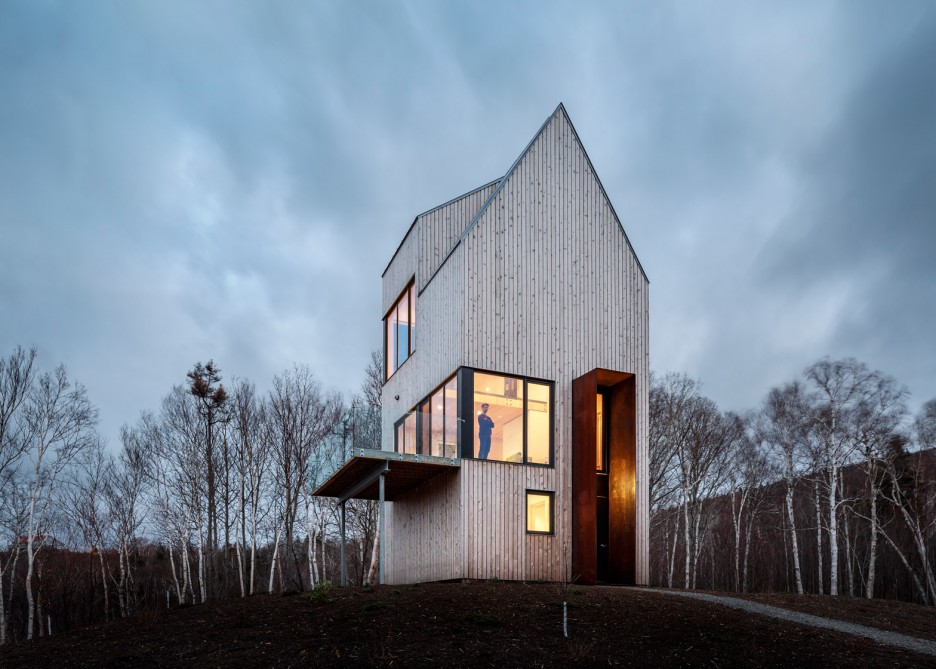
Cabin at Rabbit Snare Gorge by Design Base 8 and Omar Gandhi; ph: Doublespace (also header image)
New York collective Design Base 8 collaborated with Halifax-based architect Omar Gandhi to build a tall three-storey cabin for an avid outdoorsman and hobby arborist in a remote place of Canada’s Cape Breton. Design Base 8 utilized the area’s existing building typologies including the archetypal gable, which is commonly used to shed snow and rainwater, as well as shed forms and locally sourced wood board cladding, while Gandhi worked on the final design and detailing of the project.
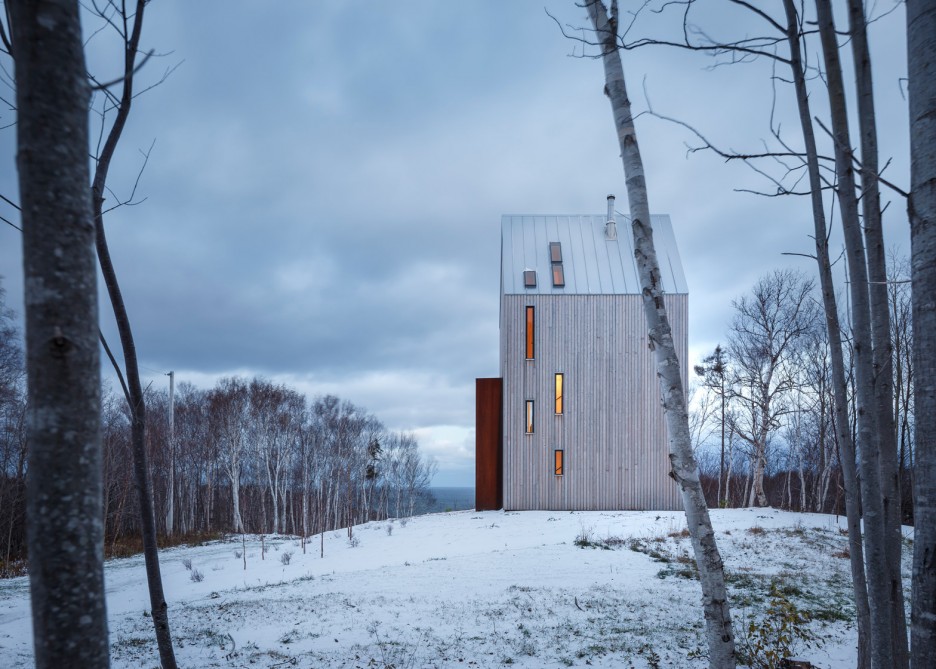
Cabin at Rabbit Snare Gorge by Design Base 8 and Omar Gandhi; ph: Doublespace
Located among the rugged landscape of Rabbit Snare Gorge, the cabin is a gently adapted gabled tower offering ample programming within a minimal footprint, which minimizes ecological disruption. The structure includes two major viewing platforms situated well above the forest canopy – one oriented directly towards the ocean and the other along the length of the convergent brook valley.
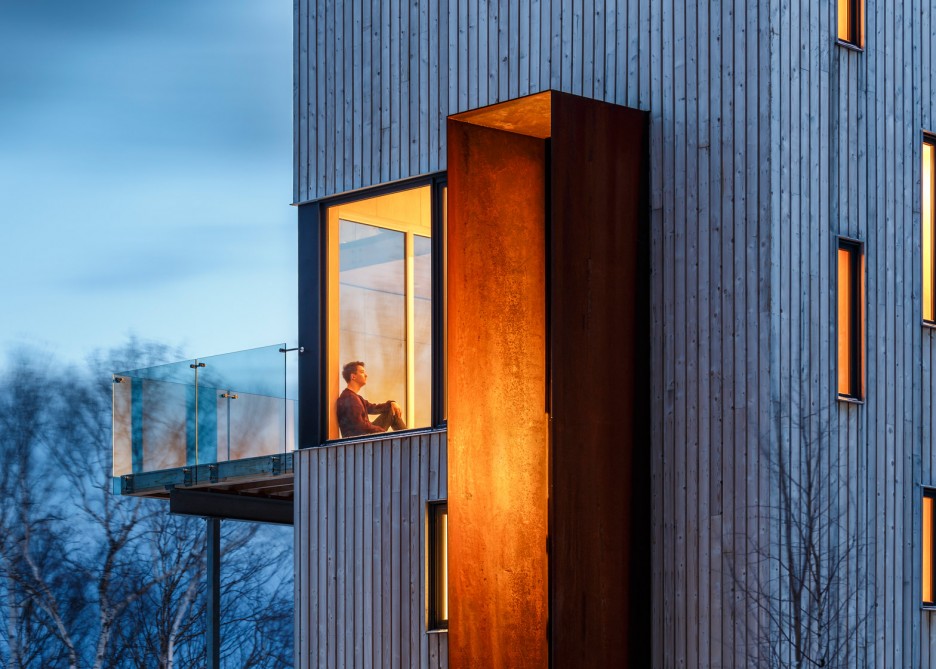
Cabin at Rabbit Snare Gorge by Design Base 8 and Omar Gandhi; ph: Doublespace
Internally, the house comprises the only bedroom and service spaces on the ground floor, a double height kitchen and dining room on the second floor and lastly the living space on the third floor. Wood paneling covers the majority of floor, wall and ceiling surfaces. Rust-coloured weathering steel is used around the doorway, reaching up to the second storey.
Its elevated position leaves the building exposed to Atlantic rainstorms, corrosive salt-spray and strong suetes – southeasterly winds that batter the island. The tall cabin combats these major lateral loads and uplift via redundant sheathing. Every solid plane, including the interior partition walls act as shear walls, diaphragms and stacked compression rings.


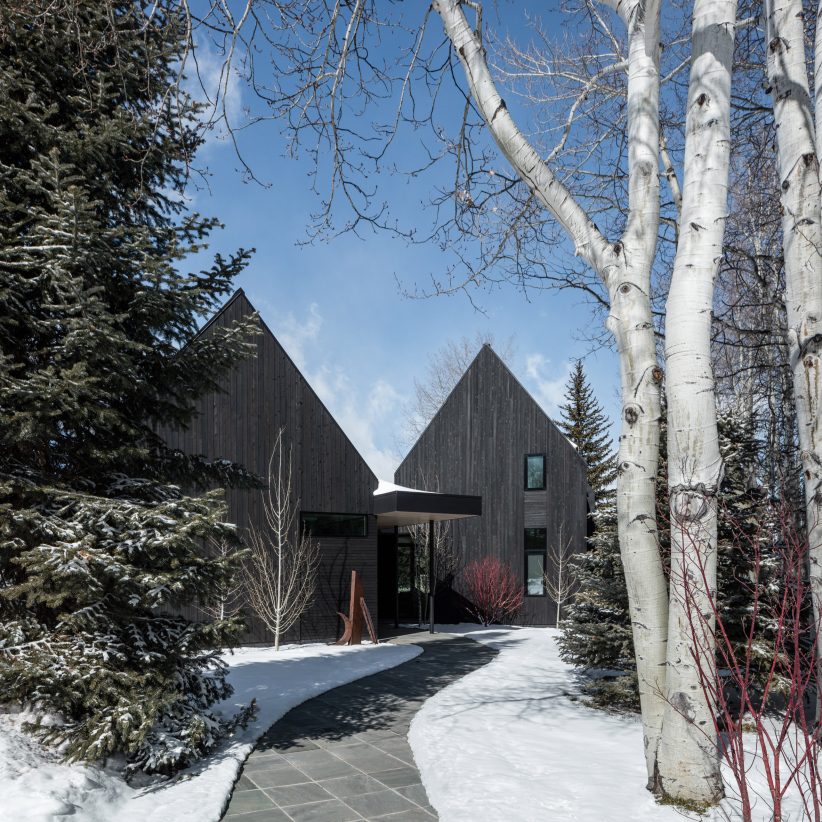
V-Plan House by Studio B; ph: James Florio
Colorado firm Studio B has created a light and airy modern home for a couple in their 80s and their family gatherings in the mountain town of Aspen, USA. To make the most of the wedge-shaped property and ensure privacy for the owners, the team chose a V-shaped formation, pushed to the property edges to screen the neighbours on both sides of the lot and direct framed views to a large central courtyard that occupies the angular space between the owner and guest wings. Large spans of glass on the ends maximise the views and blanket the house in natural light.
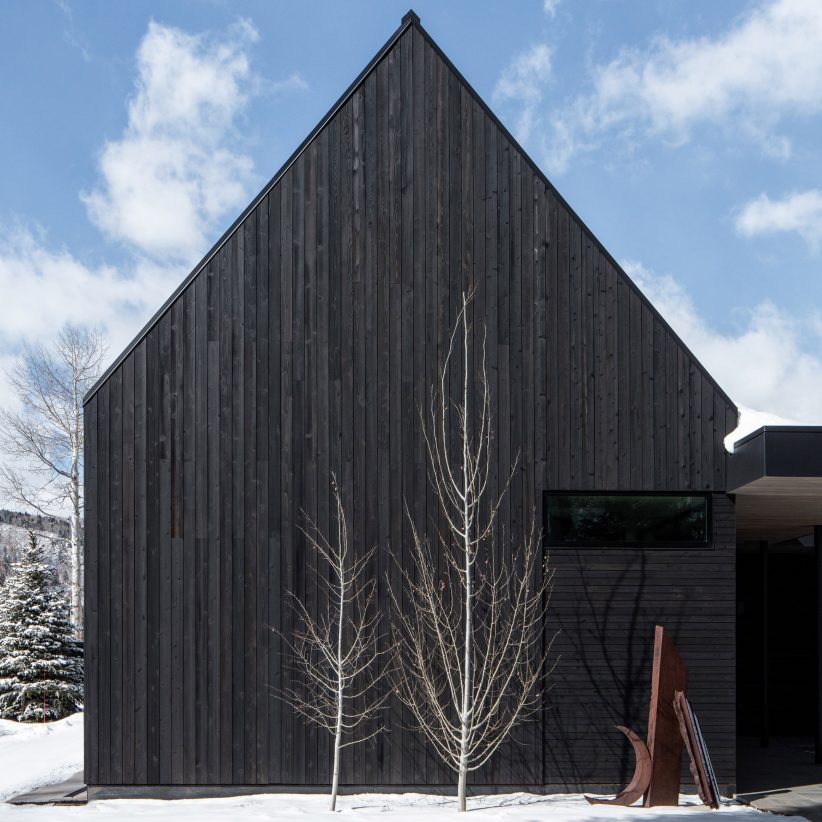
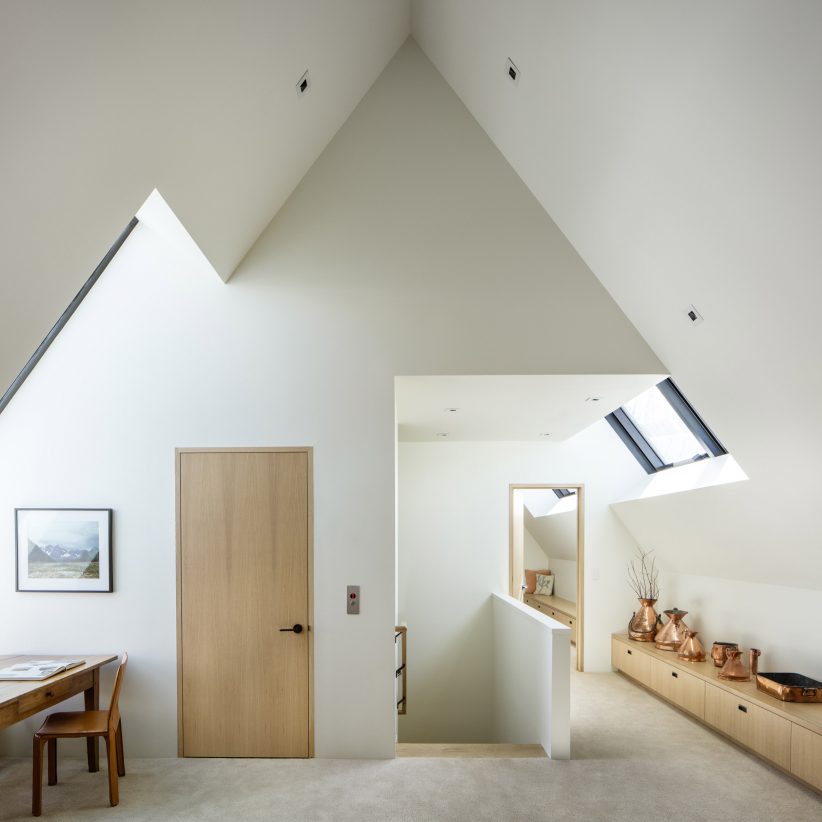
V-Plan House by Studio B; ph: James Florio
Clad in black-stained textured cedar, the house has a dark exterior which contrasts with its natural surroundings. The gabled roofs are covered in black metal with a non-reflective finish. Inside, they provide impressively tall ceilings and open and bright vaulted spaces. With white oak used for floors and plaster for walls, the interior looks markedly different than its dark exterior.


Haus Gables by MALL
MALL, Boston-based creative practice founded by Jennifer Bonner, combined a cluster of six gable roofs to form a single roof for Haus Gables, a 2,200 square-foot single-family residence located in Atlanta, USA. The studio’s long-standing research project on roof typologies found in the American South resulted in the roof plan which organizes architecture and the floorplan. In Haus Gables it establishes rooms, catwalks, and double height spaces in the interior by aligning these spaces to ridges and valleys in the roof above.
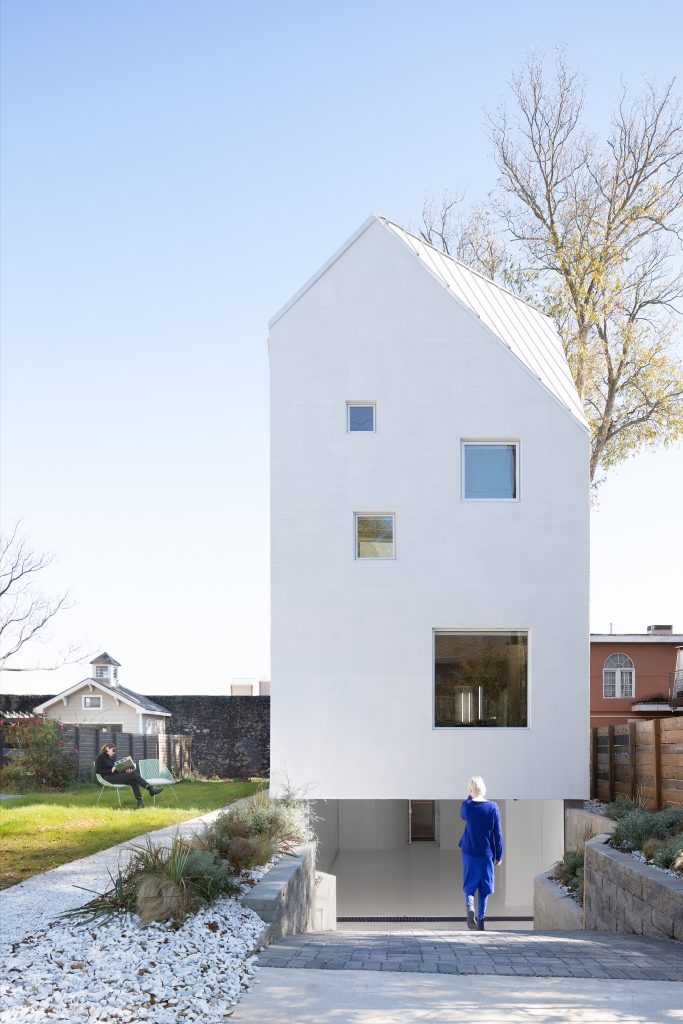

Haus Gables by MALL
The asymmetrical and unfamiliar form is complemented with the use of unconventional materials and faux-finishes, referring to the old tradition of faux finishing in the American South. All exterior and interior walls, floors, and roof are made of solid cross-laminated timber which is new to the US market. . Black terrazzo is not poured in-place and polished, but applied as a thin tile, while the marble finishes are made of unlikely materials, including vinyl and cartoonish drawings.